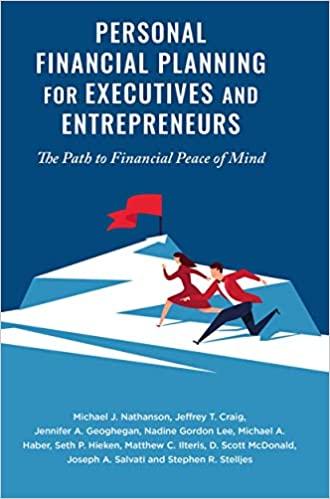Question
A private firm wishes to examine the profitability of constructing a phosphate fertilizer plant with a 20 year life. The project will produce 10,000 tons
A private firm wishes to examine the profitability of constructing a phosphate fertilizer plant with a 20 year life. The project will produce 10,000 tons of fertilizer per year starting in the end of the third year, which will be sold in the domestic market for $425 per ton. After the third year, the price is forecasted to increase by an inflation rate of 2%. Investment in plant and equipment will cost $7.5 million, spread evenly during the beginning of the first two years. The salvage value of the plant and equipment will be one-third the value of its initial cost after 20 years. Land will cost $1 million to be paid fully by the end of the first year. At the end of the project, the land will be sold for its purchase price. Land can also be sold for its purchase price after the life of the project. There are annual costs paid in the beginning of the year once production starts. The plant will need 100 workers and 20 office and managerial staff. The average wage for production workers is $800 per month, while for management staff it is $2000 per month. Raw materials will be $20 per ton of output produced while utilities will cost $5 per ton of output. Labor, raw materials and utility costs will rise by 7% annually after the first year of production. The firm has a private discount rate of 12%. 2 2.1 Set up the parameters table and financial flow in sheet4 of an excel sheet and calculate net present value and benefit cost ratio. Should the firm continue with this project based on your results? Briefly state your answer in sheet4. Copy everything to sheet 5 and calculate the internal rate of return using solver. 2.2. Your economic advisor predicts that with the unexpected effects of the recession domestic market price for fertilizer may actually be $350 per ton and the inflation rate only 1%. Given all your results, should the private firm continue with the project? Show your sensitivity test and write your answer in sheet 6. 2.3 Assume that the effects of the recession were negligible and the market price of fertilizer started at $425 per ton and the inflation rate is 2%. A government regulator found a study that proves phosphate fertilizer plants also produce sulfur dioxide as a by-product when sulfuric acid is used in the production process. They estimate that for every ton of fertilizer produced, 0.5 tons of sulfur dioxide are emitted in the atmosphere at the end of the year. The government would like to know if the benefits outweigh the cost of this project if the costs of sulfur dioxide emissions are taken into account. Find a study in the literature that derives a value for sulfur dioxide (you can try google or econlit). Use that value to recalculate net present value and benefit cost ratio in sheet 7. Do not forget to write the full citation of the study in that sheet so I can verify that you converted the units accordingly. Also in sheet 7, write your recommendation to the government based on your findings. Indicate in your recommendation any limitations in your analysis. Save your results in an excel file called ps2_(lastname).xls.
Step by Step Solution
There are 3 Steps involved in it
Step: 1

Get Instant Access to Expert-Tailored Solutions
See step-by-step solutions with expert insights and AI powered tools for academic success
Step: 2

Step: 3

Ace Your Homework with AI
Get the answers you need in no time with our AI-driven, step-by-step assistance
Get Started


